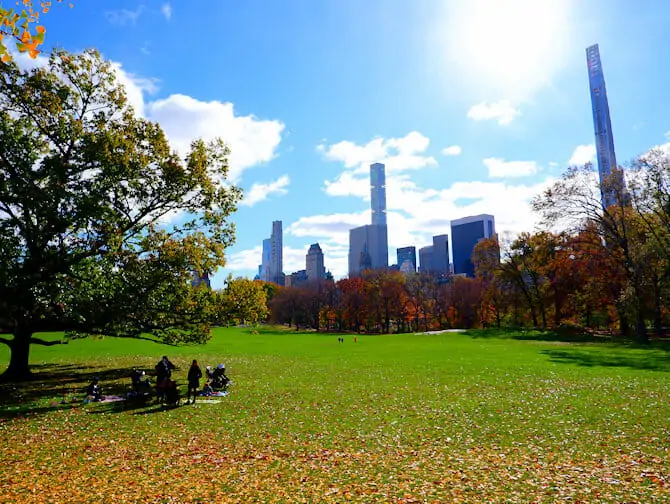4 Ways to Ensure Urban Green Spaces Are More Accessible
By Beth Rush
Parks and green spaces were all people had to stay sane and get a break from being indoors all day during the COVID-19 lockdown. That’s when the disparities between the haves and have-nots showed regarding accessibility. Outdoor recreation areas are essential for health, and well-being and there needs to be a mindset shift to make them a priority.
Parks and urban green spaces are more than just destinations and amenities — they are an essential part of daily life for everyone. Here are four ways to ensure they are accessible to all.
Involve Women and Girls in Planning
A 2022 study from the University of Leeds showed that 22% of women and 17% of girls felt unsafe in West Yorkshire parks during the day, while nearly all respondents felt unsafe at night.
Participants were asked to reflect on their answers, which resulted in recommendations to help women feel safer. The consensus was that there needs to be a societal shift to take the burden off women to stay safe, but they also mentioned green space design improvements that would help.
Here’s how you can improve urban green spaces for women’s safety:
> Increase visibility and openness. Respondents felt unsafe in enclosed areas like courts with fences or multi-use areas.
> Cut down overgrown vegetation, lower shrubs and raise canopies to reduce hidden areas.
> Hire visible staff women can go to for help or to report risky users, such as people under the influence, lone men, and other hazards.
> Create areas for equipment like swings and hammocks.
> Design parks with mixed spaces for everyone.
> Make opportunities for teenage girls to co-design age- and gender-sensitive spaces.
These recommendations are a starting point for communities where women feel unsafe in urban green spaces.
Construct Small Urban Green Spaces Within Cities
Researchers who assessed equity and accessibility in 254 cities in China make excellent suggestions for improving accessibility, especially in low socioeconomic areas. They determined that pocket parks or urban green spaces may provide an urban oasis where large parks may be challenging.
You can place pocket parks near office buildings, community centers, or high-rise buildings. In industrial lands and brownfields with poor urban development, the solution is to build green spaces rather than buildings. Smaller parks can also benefit communities by preventing gentrification and displacement from building funds or urban renewal that will only attract more wealthy people.
You can also improve maintenance, regularly clean, start community projects, and add new activities to existing urban green spaces.
Encourage Community Input
Urban green spaces focusing on environmental wellness and preserving biodiversity are just as important as providing recreation. You must involve communities and determine what is most needed in the area.
This might look like one community group’s project in Crocker Amazon Park in San Francisco that encourages residents to use green spaces to plant their own gardens and vegetables. The group worked with community members to understand their needs and encourage them to make creative suggestions. Some mentioned rooftop gardens, while others preferred vertical forests in high-rise buildings to improve air quality.
Improve Accessibility for People With Mobility Issues
Creating urban green spaces is a delicate balance between creating a physically accessible space and a socially welcoming and inclusive environment. Parks should offer sports and inclusive recreational activities that encourage mingling with other people.
Physical provisions you can include in urban green spaces include:
> Specify passage diameters, ramps, and trails.
> Include multiple places for rest with enough space for wheelchair or walker users.
> Use anti-slip and stable wall and surface finishes.
> Install accessible handles for doors, entrances, fences, gates, and restrooms.
> Offer accessible sports for people facing mobility challenges. For example, pickleball is a low-intensity and low-impact game that prevents excessive strain for people with limited mobility or joint problems, thanks to the smaller court.
> Incorporate an accessible information system accessible from park spaces or trails.
> Use appropriate materials or patterns for building walkways. For example, sidewalk patterns with a 90° herringbone design prevent vibrations that may cause pain or discomfort for people using wheelchairs.
The Importance of Accessible Urban Green Spaces
Urban green spaces promote relaxation and foster connections with nature, offering numerous benefits for human well-being. Studies consistently demonstrate that being outdoors improves mental health, alleviates stress, and boosts overall wellness. Additionally, these pockets of greenery function as crucial air purifiers, combatting escalating pollution concerns.
These areas are also biodiversity hotspots. They nurture diverse plant and animal species, maintaining ecological equilibrium and cultivating resilient urban ecosystems.
Green spaces also counteract the urban heat island phenomenon, which results from insufficient vegetation and abundant concrete surfaces, leading to extremely high temperatures. Trees, grass, and other plants mitigate heat via shading, evapotranspiration, and cooling properties. In addition, the urban green space cooling effect influences the surrounding area.
Additionally, urban green spaces facilitate social cohesion by serving as communal gathering places, encouraging residents’ interaction, strengthening neighbors’ bonds, and building vibrant communities. Proximity to parks can bolster social ties, decrease crime, and elevate general living standards.
Creating accessible green spaces ensures everyone can experience the benefits of urban green spaces, no matter who they are or where they reside.
Creating Accessible Urban Green Spaces
Developing urban green spaces calls for more than just physical changes. Psychological and community shifts are necessary to ensure everyone feels safe, welcome, and included. You should also consider how you can involve changemakers and policymakers to ensure urban green spaces work for all.
About the Author: Beth Rush is the green wellness editor at Body+Mind. She has more than five years of experience writing and editing articles covering topics like sustainable transit and the importance of green spaces in urban planning. You can find Beth on Twitter @bodymindmag.
Subscribe to Body+Mind for more posts by Beth!
